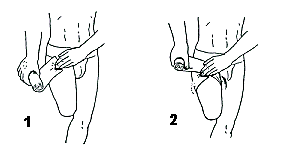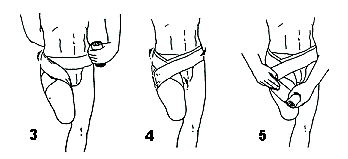
For the average adult two or three elastic bandages six inches wide are used. During application, the bandages should be stretched to about two-thirds of the limit of the elastic, and the greatest tension should be around the end of the stump.
The stump should be kept bandaged at all times, but the bandage should be changed every four or six hours. It must never be kept in place for more than 12 hours without rebandaging. If throbbing should occur, the bandage must be removed and rewrapped. Edema occurs rapidly when the stump is left unbandaged so it is very important to replace the bandage without delay.
Special elastic "shrinker" socks are available for use instead of elastic bandages, and while not considered by some to be as effective as a properly applied elastic bandage a shrinker sock is better than a poorly applied elastic bandage.
Whether elastic bandage or shrinker sock is used, it should be removed at least three times daily and the stump should be massaged vigorously for 10-15 minutes. The bandage or sock must reapplied immediately after the massage.



The electronic version of this manual is presented by Dankmeyer, Inc., with the permission of the authors. This manual may not be redistributed in any form.